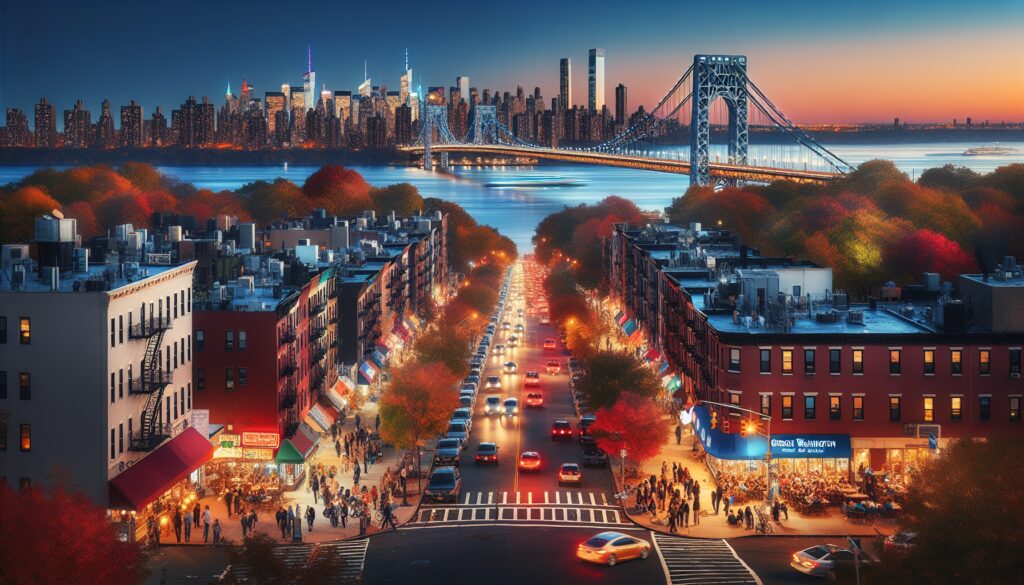
The Greater New York/New Jersey area is an expansive region teeming with history, culture, and economic vitality. Spanning multiple cities and states, this region represents not just the heart of the northeast but also a significant portion of the nation's population and economic output.
🔍 Seeking a breakthrough in Type 2 Diabetes management?
Discover our expert insights and innovative approaches on ‘How to Cure Diabetes’.
Click to transform your health journey today!
What you\'ll find in this article?
- What is the greater New York metropolitan area?
- Key cities in Greater New York/New Jersey
- History of Greater New York
- Economic significance of Greater New York
- Demographics and population diversity
- Cultural and contemporary life in Greater New York
- Preguntas relacionadas sobre Greater New York/New Jersey
What is the greater New York metropolitan area?
The Greater New York metropolitan area is a sprawling region that extends beyond the city limits, encompassing parts of New Jersey, Connecticut, and Long Island. It's a melting pot of communities and cultures, renowned for its impact on commerce, finance, media, and art. The area's significance lies in its ability to attract people from all walks of life, seeking opportunities in this urban landscape.
Often referred to as the Tri-State area, this metropolitan hub is constantly buzzing with activity, welcoming millions of visitors each year and serving as a home to over 20 million residents. It's an economic powerhouse that never sleeps, with each borough and county contributing to its dynamic and robust economy.
With a wide array of attractions and landmarks, the Greater New York area is not only a tourist mecca but also an important locale for international diplomacy and global events. From the United Nations Headquarters to the Financial District in Manhattan, the region is pivotal on the world stage.
Explore our specialized services in diabetes care 🌟.
From personalized diet plans to effective exercise routines, we have what you need to take control of Type 2 Diabetes.
Visit our services page now!











Key cities in Greater New York/New Jersey
At the heart of the region lies New York City, with its five boroughs - Manhattan, Brooklyn, Queens, the Bronx, and Staten Island. Each borough offers a unique experience, from the iconic skyline of Manhattan to the diverse neighborhoods of Queens.
Across the Hudson River, New Jersey cities such as Newark and Jersey City serve as critical economic and cultural extensions of the region. Long Island adds to the mix with its significant suburban and commercial areas, while cities like Stamford in Connecticut are integral to the region's finance and business sectors.
These key cities represent the multifaceted nature of the Greater New York area, providing a juxtaposition of urban and suburban life that caters to a diverse range of preferences and lifestyles.
History of Greater New York
The rich history of the Greater New York area is a tapestry of pivotal moments and significant transformations. From its roots as a Dutch colony to its rise as an international metropolis, the region's history speaks to the resilience and adaptability of its people.
Historical landmarks dot the landscape, telling stories of the past and the evolution of the area. The Statue of Liberty stands as a beacon of freedom and hope, while the Ellis Island Immigration Museum offers a glimpse into the lives of those who came to America seeking a better life.
Significant events, such as the construction of the Erie Canal, which connected the Atlantic Ocean to the Great Lakes, played a crucial role in the economic development of the region and the nation at large.
Economic significance of Greater New York
The Greater New York/New Jersey region is not just a cultural epicenter but also a global financial hub. Wall Street is synonymous with finance, and the New York Stock Exchange is one of the world's largest. The region's economy is impressively diverse, spanning industries like technology, fashion, and healthcare.
Long Island and New Jersey counties have robust economies in their own right, with sectors such as pharmaceuticals, telecommunications, and biotechnology thriving in the area. The confluence of these industries fosters innovation and drives economic growth, making the region an essential player in the global market.
Furthermore, the presence of international airports such as JFK and Newark Liberty facilitates global business and tourism, further cementing the area's economic influence.
Demographics and population diversity
The demographics of Greater New York are as varied as its landscape, with an array of ethnicities, languages, and cultures coexisting. This diversity is one of the region's greatest strengths, offering a wealth of perspectives and experiences that enrich community life.
The population is a dynamic blend of long-time residents, immigrants, and newcomers, all of whom contribute to the region's vibrancy. This demographic mix has also led to a diverse culinary scene, with cuisines from around the world easily accessible.
Understanding the demographics is crucial for organizations like the American Diabetes Association, which tailors its programs and outreach to effectively serve the community's diverse needs.
Cultural and contemporary life in Greater New York
The cultural landscape of Greater New York is unparalleled, with an endless array of museums, theaters, music venues, and art galleries. From Broadway shows to underground art scenes, the region is a hotbed for creative expression.
Residents and visitors alike can enjoy a diverse range of recreational activities, whether it's exploring Central Park, attending a concert at Madison Square Garden, or visiting the historic boardwalks of Coney Island and the Jersey Shore.
The region's commitment to cultural preservation and innovation is evident in the many festivals and events that take place year-round, celebrating everything from film to food to heritage.
Preguntas relacionadas sobre Greater New York/New Jersey
What is considered the greater NY area?
The greater NY area typically refers to the confluence of New York City, Long Island, and parts of New Jersey and Connecticut. It's a region known for its economic, cultural, and demographic significance, encompassing a vast urban landmass and thriving population centers.
Within this area, each community brings its unique flavor to the overall identity of the region, with interconnected economies and cultures that contribute to the dynamic nature of Greater New York.
What is the New York and New Jersey area called?
The New York and New Jersey area, encompassing parts of Connecticut as well, is often referred to as the Tri-State area. This designation highlights the interconnectedness of these states and the seamless nature of the region's economy and culture.
It's a term that underscores the collective identity of an area that, while composed of separate states, operates as a unified economic and social hub.
Why is it called Greater New York?
Greater New York denotes not just the city itself but also the surrounding regions that are economically and culturally integrated with it. The term 'Greater' signifies the extended reach of the city's influence across state lines, embracing the wider metropolitan area that contributes to and benefits from New York City's prominence.
This term has historical roots, dating back to the consolidation of New York City at the turn of the 20th century, which created a larger urban municipality that set the stage for the modern metropolis we know today.
What states are in the greater New York City area?
The greater New York City area includes parts of New York, New Jersey, and Connecticut. This Tri-State area forms a continuous urban and suburban network, with seamless transitions between the states reflecting their shared economic and social ties.
As part of the broader region, each state plays a role in the overall character and functionality of Greater New York, contributing to its status as a leading global metropolitan area.
As we delve into the essence of the Greater New York/New Jersey area, we invite you to watch an insightful video that captures the spirit of this remarkable region.
In conclusion, the Greater New York/New Jersey area is a complex tapestry of cities and states that collectively form a vibrant and influential region. Its rich history, diverse population, and robust economy make it a microcosm of the American experience. As a reflection of the nation's past and present, it continues to shape the future through its dynamic cultural scene and its role as an economic powerhouse.
✨ Other articles you might be interested in:
- 2016 Step Out at Six Flags Magic Mountain: A Walk to End Diabetes
- Exploring the Role of a Certified Medical Assistant - PRN at Duke Outpatient Clinic
- Essential hotel information for travelers
- Maximize Your Health: Using the American Diabetes Association Mobile Calendar
- Registration details for events on National Plaza



